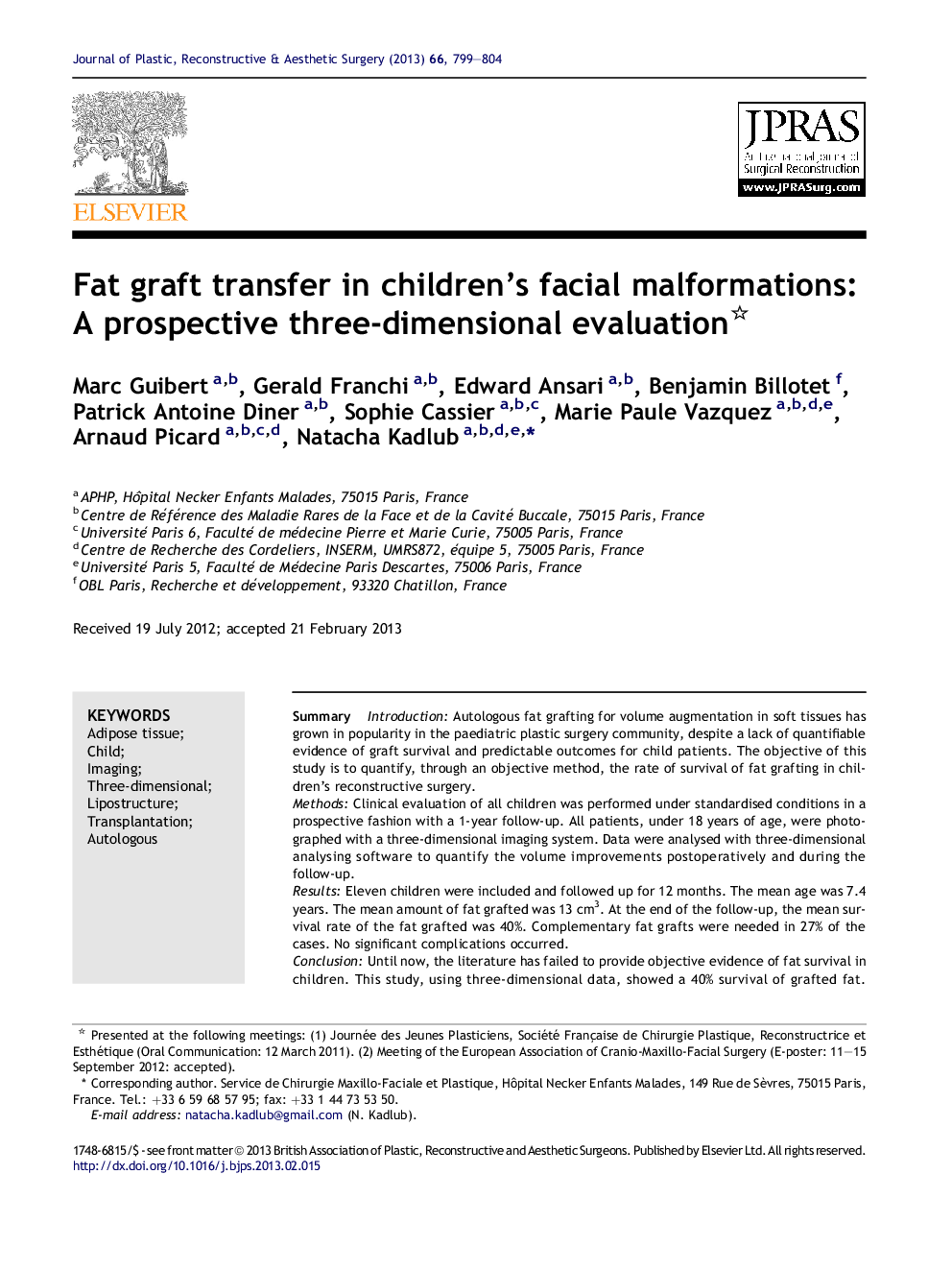| Article ID | Journal | Published Year | Pages | File Type |
|---|---|---|---|---|
| 4117719 | Journal of Plastic, Reconstructive & Aesthetic Surgery | 2013 | 6 Pages |
SummaryIntroductionAutologous fat grafting for volume augmentation in soft tissues has grown in popularity in the paediatric plastic surgery community, despite a lack of quantifiable evidence of graft survival and predictable outcomes for child patients. The objective of this study is to quantify, through an objective method, the rate of survival of fat grafting in children's reconstructive surgery.MethodsClinical evaluation of all children was performed under standardised conditions in a prospective fashion with a 1-year follow-up. All patients, under 18 years of age, were photographed with a three-dimensional imaging system. Data were analysed with three-dimensional analysing software to quantify the volume improvements postoperatively and during the follow-up.ResultsEleven children were included and followed up for 12 months. The mean age was 7.4 years. The mean amount of fat grafted was 13 cm3. At the end of the follow-up, the mean survival rate of the fat grafted was 40%. Complementary fat grafts were needed in 27% of the cases. No significant complications occurred.ConclusionUntil now, the literature has failed to provide objective evidence of fat survival in children. This study, using three-dimensional data, showed a 40% survival of grafted fat. The use of three-dimensional photographs and analysis has great clinical potential for surgical planning and follow-up.
